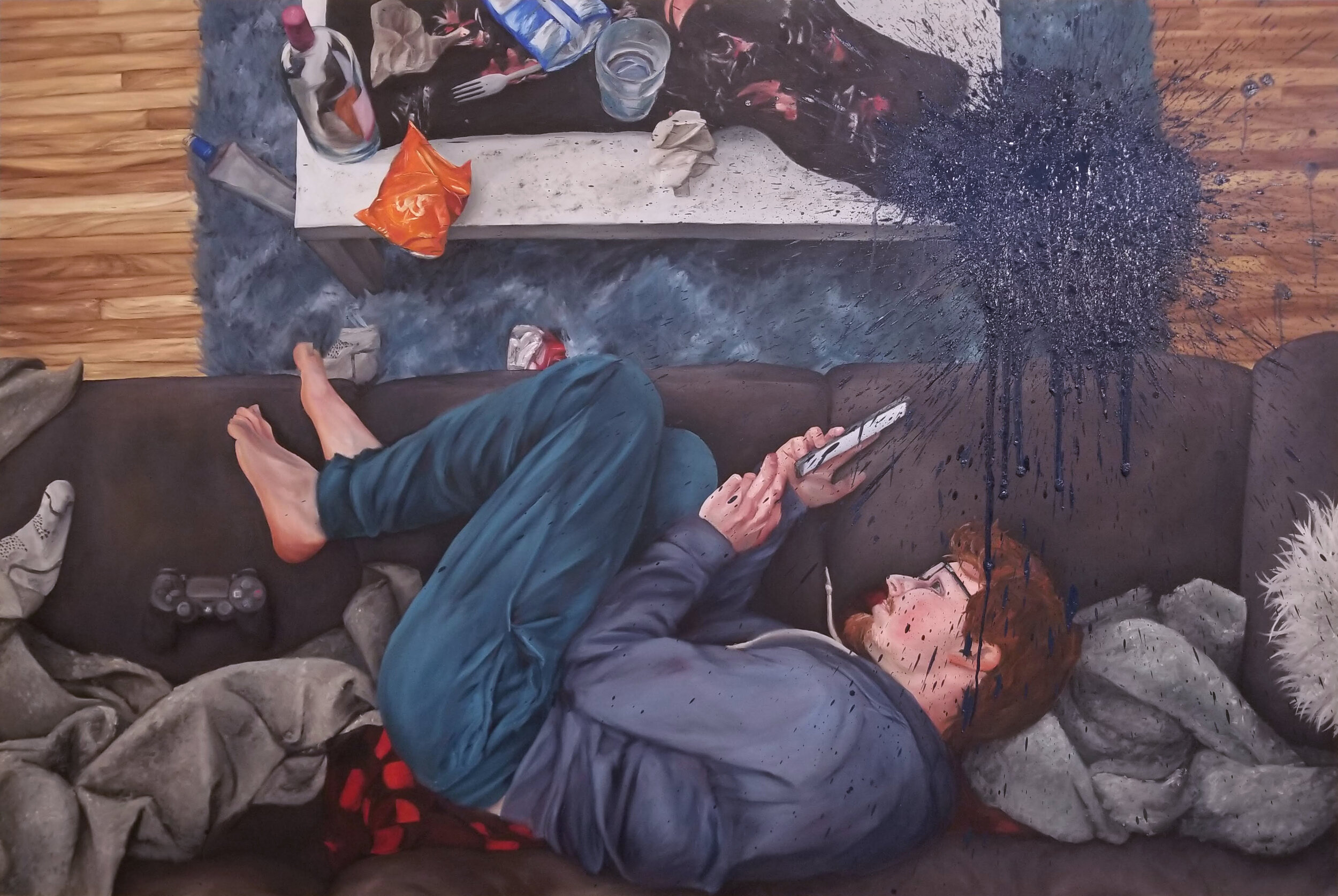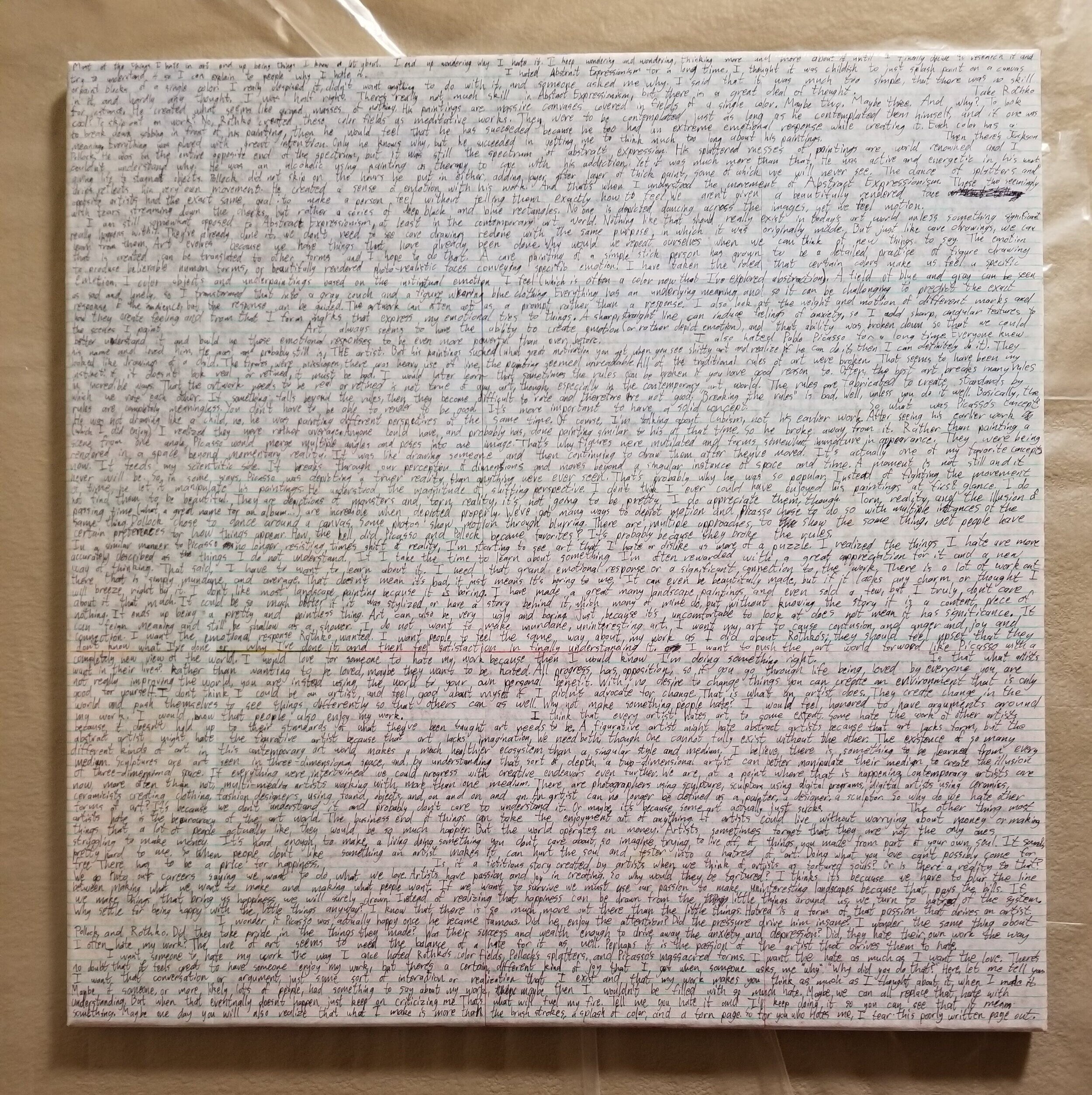I recently received an award for my painting Decline from Light Space & Time Gallery (https://www.lightspacetime.art/open-art-exhibition-2020-painting-other-media/ ). From a group of 1,004 participants, I was awarded Special Recognition for Excellence in Art in the 10th Annual “Open” (No Theme) Art Exhibition. I consider this an international exhibition because the entries were from artists in 34 different countries, which is very exciting! For me, this is an important step as I make the transition from a student artist to an independent artist. Making work is only half of the job. The other half is marketing myself, applying for grants, shows, and competitions, and selling my work.
As I continue to make work that I want to make, I am also trying to be heard. It is important to me to do both. Being admitted to and awarded in this competition was important to me. It gives me a little more visibility as I move forward and enter more shows and competitions. It is also exciting to see the other work that was more successful in this exhibition than my own. It gives me insight to the other active artists around me. I can try to do better than them next time, or do something different or more original than the rest. At the same time, I see that I should continue making the art that says what I want to say because it is doing well in the eyes of others.
Decline, Oil on Canvas, 4’ x 6’, 2020
It is hard for me to think that I am doing well. Just because I was given an award, does not mean that I should stop or slow down on my work. It has been really hard the past few months to be motivated to create anything, but I know I can do better. To admit that I have accomplished something is almost like admitting defeat because it feels like saying I am finished with my work. I am definitely not finished. In fact, I feel that I am only just beginning to express myself in art in a way that I have not done before. I have not really accomplished anything until I feel I have said everything I need to say, which may never come.
Again, I am genuinely pleased with the result of my application to this show. Light Space & Time Gallery is a great online source for new up-and-coming artists like myself. They have several articles on how to write artist statements, how to apply to calls for entry, how to promote your art, and so many others that are extremely useful. Beyond that, they have an extensive collection of art to view from their archives. Please go check it out, it is worth the time. https://www.lightspacetime.art/













